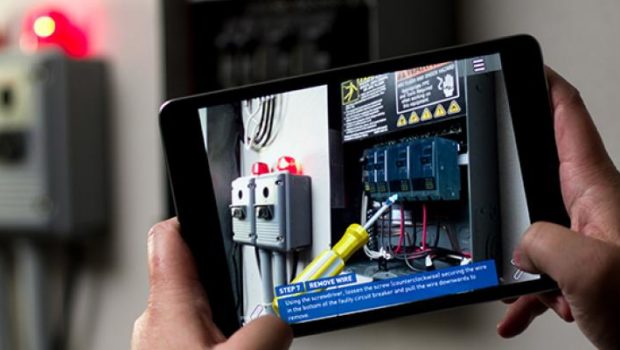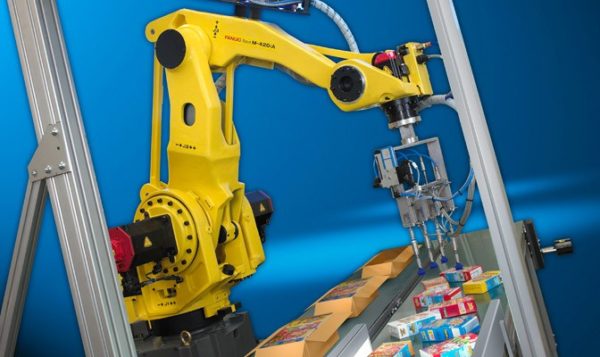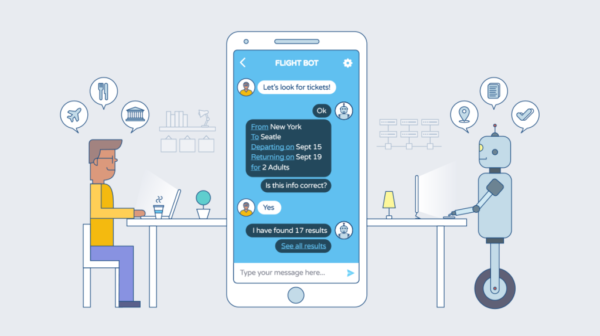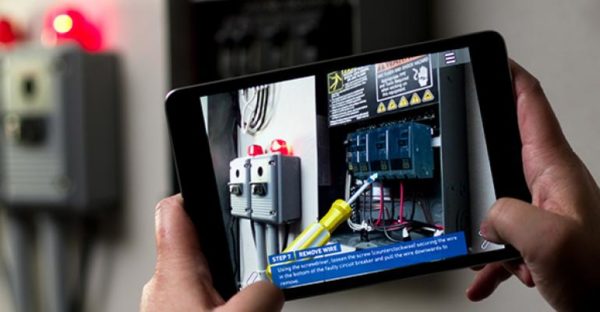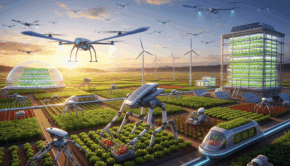4 Examples of Future Technology Coming to Your Workplace
New technology is disrupting everything from how we shop to how we make phone calls – and in the coming years, new technology will transform the way we work, too.
To measure the growing impact of new technology in the workplace, a new survey asked 521 workers to identify technology their companies have invested in. According to workers:
- 17% of companies use robotics
- 16% use wearables
- 15% use artificial intelligence
- 11% use augmented or virtual reality
As interest in these forms of future technology grows, Gartner forecasts that companies will collectively spend $3.7 trillion on technology by the end of 2018.
But what does this technology actually look like in practice? Although emerging workpalce technology might sound like science fiction, it’s often much more subtle than you’d expect.
In this article, we’ll look at four ways technology might already be changing the way you work.
Robotics Automate Repetitive Tasks
For many, the term “robotics” summons an image of Star Wars’ C-3PO – a helpful creature made of metal or plastic who exists to serve humans.
That image isn’t as far fetched as it used to be. At Amazon, warehouse workers who used to lift heavy bins are now responsible for babysitting robots that do the heavy lifting for them. Similarly, robots have already started working as hotel bellhops and hardware store helpers.
However, experts predict that most office workers will work alongside robots instead of being replaced by them. According to RecruitLoop, many human workers aren’t easily replaced: “Robots can certainly handle their prescribed tasks, but they typically cannot handle unexpected situations.”
Office workers are more likely to encounter robotics in the form of automation software. These tools can make work processes more efficient while still relying on human workers’ critical thinking skills.
Automation software can reduce labor by automatically sending reminders, streamlining communication, and allowing users to schedule actions such as social media posting in advance. Examples of automation software include Trello, Buffer, and Slack.
By investing in robotics and automation, companies can save time and money while improving accuracy.
Wearables Support Productivity and Work-Life Balance
If you have a FitBit or an Apple Watch, you’re already familiar with wearable technology. Wearable technology is broadly defined as smart technology that can be worn as an accessory or implant.
In 2016, Gartner predicted that two million employees will be required to use wearable technology at work by the end of 2018.
Experts anticipate that wearable technology will enhance future workplaces in several key areas:
- Monitoring workers’ safety
- Reducing healthcare costs
- Improving efficiency
For example, paramedics and firefighters might use wearable technology capable of monitoring their stress levels, which in turn can help keep them safe in dangerous situations.
In an office setting, an HR department might provide wearables such as FitBits to track health and wellness programs. If an HR professional noticed that most workers got very few steps during the day, he or she could make an informed decision to arrange daily team walks or provide treadmill desks to help employees meet their health goals.
A study by PwC found that nearly 50% of consumers already own personal wearables. However, if a job requires wearables, more than two-thirds of workers (67%) believe their companies should be responsible for the cost, while 25% would need companies to commit to protecting their privacy.
As wearables becomes increasingly common, companies will find new ways to use them to improve life at work.
Artificial Intelligence Can Cut Down on Repetitive Tasks
Fans of the Terminator franchise might be extra wary of artificial intelligence. After all, the series’ true villain is a rogue artificial intelligence system known as Skynet.
But in practice, artificial intelligence is much less sinister. Like automation, artificial intelligence can help human workers become more efficient by completing some tasks for them.
Two especially promising examples of artificial intelligence in the workplace include machine learning and chatbots.
At Deloitte, business consultants no longer need to analyze audited samples of contracts. Instead, Deloitte has invested in machine learning tool that use artificial intelligence to rapidly analyze thousands or tens of thousands of contracts. Business consultants can now analyze patterns faster and with less risk of missing important information.
Similarly, artificial intelligence chatbots cut down on the labor involved in customer service. Like machine learning tools, these chatbots are capable of learning to respond to customers by carrying on real conversations. This could free customer service staff to focus on other tasks.
By freeing workers from time consuming, repetitive tasks, artificial intelligence promises to make future jobs more interesting and engaging.
Augmented Reality Might Help Remote Workers
Some offices are exploring ways to incorporate augmented and virtual reality into the workplace. Augmented reality is an interactive display that layers visual elements over a video or photo display, while virtual reality is a computer-generated simulation of a 3D environment.
Although augmented and virtual reality are less common in the workplace than other forms of future technology, but some predict that won’t be the case for long.
In a thought provoking article on WIRED, technology reporter David Pierce observes that Silicon Valley companies and stalwart titans alike are actively investing in augmented reality infrastructure.
“Just as ubiquitous cameras led to Instagram and always-on GPS begat Uber, we’ll come up with completely new ways to get things done when we’re always inside an AR display,” Pierce predicts.
In the future, meetings might be enhanced by augmented reality notes, videos, or schematics that are more easily accessible than looking at a computer or TV screen.
Meanwhile, one of the most promising possibilities of virtual reality is the way it might transform work for remote employees.
According to some estimates, half the workforce may work outside of traditional offices by 2020. Instead of connecting through iffy video chats and instant messages, remote workers might be able to pop on a virtual reality headset and join their colleagues in a digital space.
Companies that invest in augmented and virtual reality now will be ahead of the curve as these technologies become more common in the future.
Future Technology Is Heading Your Way
Before long, technology that seems futuristic will become common in the workplace.
Tools like robotics, wearables, artificial intelligence, and virtual/augmented reality have the power to transform workers’ efficiency and work life balance – and more companies are investing in them each year.
Although new technology might seem intimidating, there’s plenty to be be excited about, too – especially the fact that robots aren’t likely to replace us just yet.
Author bio:

Michelle Delgado is a content developer and marketer at Clutch, a B2B ratings and reviews company. She reports on web design, human resources, and the future of work.

